Stretching: tips from the physiotherapist

We’ve all done some stretching at some point in our lives, even the least sporty of us. Read the physiotherapist’s advice here to get the most out of stretching.
Just think about it: who has never instinctively stretched after getting out of bed in the morning after a long and restful night’s sleep? This natural and common action of stretching our muscles could easily be considered a stretching exercise, a well-known technique practised worldwide, with a host of benefits both physical and mental, always appreciated by all.
- What is stretching?
- How stretching works and what it’s for: the benefits
- Different types of stretching
- How to do stretching: exercise examples
- Tips on Stretching from the Physiotherapist
What is stretching?
Stretching is a form of physical exercise in which a specific muscle, tendon or set of muscles is stretched, i.e. extended – to increase the elasticity and flexibility of muscles and tendons (myotendinous regions).
More specifically, stretching of muscle fibre starts from the sarcomere, the base of contraction in muscle fibre. Then what happens? When the sarcomere contracts, the overlapping area between thick and thin myofilaments increases, and when this extends, the overlapping area shrinks, enabling the muscle fibres to stretch. Once the muscle fibre has reached its maximum rest length (all sarcomeres are fully extended), a further stretch applies force around the connective tissue. When the tension increases, the collagenous fibres in the connective tissue align along the same line as the tension force.
When you do stretching exercises, the muscle fibre is pulled throughout its entire length – sarcomere by sarcomere we could say – to then enable the connective tissue to sustain the remaining relaxant part.
The running length of the entire muscle depends on the number of extended fibres (similarly to the way in which the total length of a muscle that contracts depends on the number of fibres that contract): the more stretching fibres there are, the greater the overall length reached by the stretched muscle.
How stretching works and what it’s for: the benefits
When the muscle is stretched, so is the muscle spindle. The muscle spindle records the change in length (and how fast) and sends signals to the spinal cord which processes this information. This triggers the stretch reflex (also called the myotatic reflex) which attempts to resist the change in muscle length by causing the stretched muscle to contract. The speed in length change is directly proportional to the muscle contractions. This basic function of the muscle spindle is to maintain muscle tone and protect the body from injuries.
One of the reasons for holding a stretch for a prolonged period of time is that as you hold the muscle in a stretched position, the muscle spindle becomes accustomed to the new length and reduces its signalling. Gradually, you can train your stretch receptors to allow greater lengthening of the muscles.
According to M. Alter, these are just some of the benefits of stretching:
- Improved physical fitness
- Improved ability to learn how to perform complex movements
- Improved physical and mental relaxation
- Increased awareness of your body
- Reduced risks of injuries to joints, tendons and muscles and muscle aches/tension
- Benefits in alleviating menstrual pain for women
What’s best not to do to fully enjoy the benefits of muscle stretching?
You need to pay special care to do an appropriate warm-up phase, and avoid overdoing the stretching session; if you ache the day after stretching, then in all probability you did this for too long.
We also advise against stretching sessions in casual sequences, and always avoid the “wrong” exercises.
The sections below provide some examples and exercise plans you can follow.
Different types of stretching
There are many types of stretching exercises, and here we will outline the most common ones and their features:
Ballistic stretching
Ballistic stretching is based on moving the body or a limb in an attempt to bring or force it beyond its normal range of motion. This type of stretching includes any movement where you bounce forward and down repeatedly to touch your toes This type of stretching is not considered useful and can lead to injury. This is because does not allow your muscles to adjust to, and relax in, the stretched position. It may instead cause them to tighten up by repeatedly activating the stretch reflex.
Dynamic stretching
Dynamic stretching, according to Thomas Kurz in his book “Stretching Scientifically”, “involves moving parts of your body and gradually increasing reach, speed of movement, or both” through controlled swings of the arms or legs, and torso twists. Do not confuse dynamic stretching with ballistic stretching, which is described later in this section. In dynamic stretches, there are no bounces or “jerky” movements.
One of the advantages of dynamic stretching is that it improves dynamic flexibility and is quite useful as part of your warm-up before a workout.
Active stretching
Active stretching, also known as static-active stretching, is an active stretch in which you assume a position and then hold it there with no assistance other than using the strength of your agonist muscles. One example of this would be bringing your arm up high and then holding it in that position actively, using only your agonist muscles. Many of the movements found in various forms of yoga are active stretches.
Passive stretching
Passive stretching, also known as relaxed stretching or static-passive stretching, is a stretch where you assume a position and hold it with some other part of your body, or with the assistance of a partner or some other apparatus. For example, lying back with legs stretched up placed against a wall. In this case the wall is the support used to hold this stretch position. Relaxed stretching, as the name says, is very good as a “cooling down” stretching exercise after training and helps reduce post-workout muscle fatigue, and soreness the day after.
Static stretching
The terms “passive stretching” and “static stretching” are often used interchangeably. However, there are a number of differences between the two. According to M. Alter, “Static stretching – developed by Bob Anderson in 1975 – consists of stretching a muscle (or group of muscles) to its farthest point and then maintaining or holding that position, whereas Passive stretching consists of a person who is relaxed (passive) while some external force (either a person or an apparatus) brings the muscle to a stretched position”.
Isometric stretching
Isometric stretching is a type of static stretching, i.e. one that does not use motion, which involves the resistance of muscle groups through isometric contractions of the stretched muscles. The use of isometric stretching is one of the fastest ways to increase static-passive flexibility and, in some cases, is much more effective than either passive stretching or active stretching alone. Isometric stretches also help to strengthen “tensed” muscles and decrease the amount of pain usually associated with stretching. To obtain the necessary resistance for an isometric stretch, resistance is usually created manually to your own limbs, or with the help of a partner, or using an apparatus such as a wall or the floor.
PNF stretching
PNF stretching, where PNF stands for Proprioceptive Neuromuscular Facilitation, is not really a type of stretching but is a technique of combining passive stretching and isometric stretching in order to achieve maximum static flexibility.
How to do stretching: exercise examples
So here we are. Now we have more information on the different types of stretching, how it works and its benefits, let’s see some examples of stretching exercises for the various parts of the body.
Examples of stretching for the back
This set of exercises is also useful for lower pack ache and lumbosciatica.
– Knees to chest: hold for one minute, breathing deeply
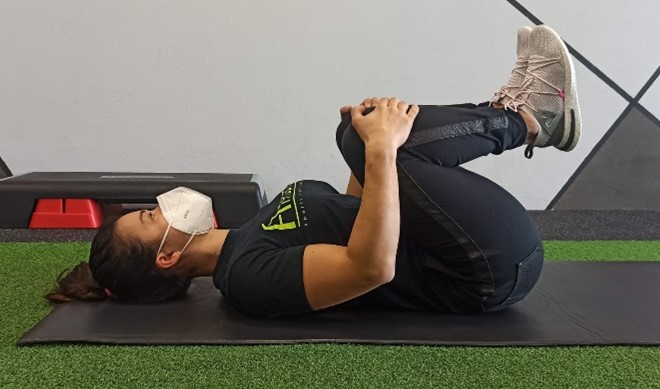
– Lumbar rotation: hold for one minute, breathing deeply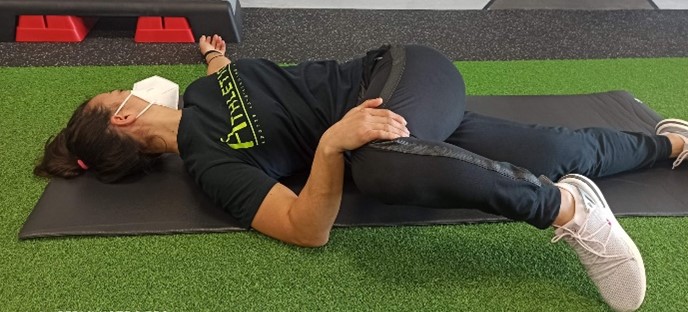
– Step stretching: with one or two steps if necessary. Hold for 40’’.
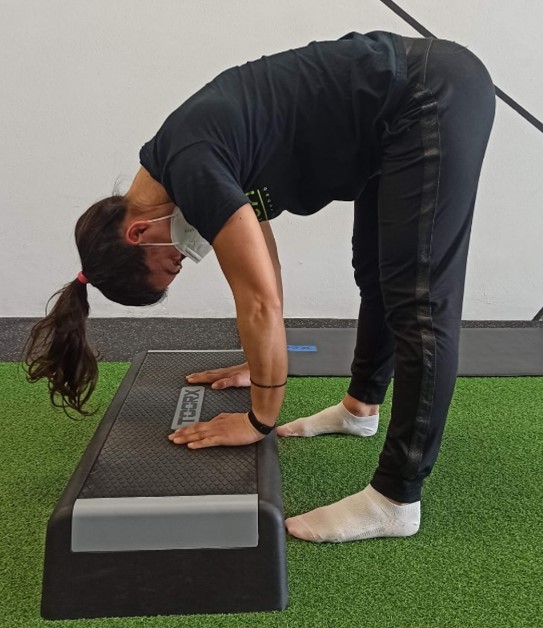
– Legs up the wall posture: Hold this position for 3’-4’, breathing with the diaphragm
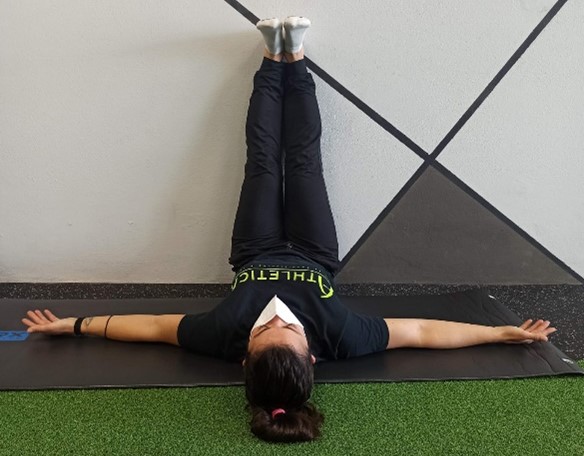
4.2 Examples of stretching for the neck
This set of exercises is also useful for cervical pain.
– Lateral bending: hold for one minute, breathing deeply
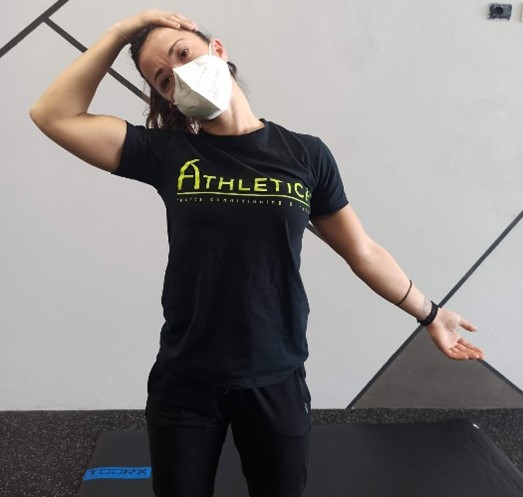
– Flexion+Rotation: hold for one minute, breathing deeply
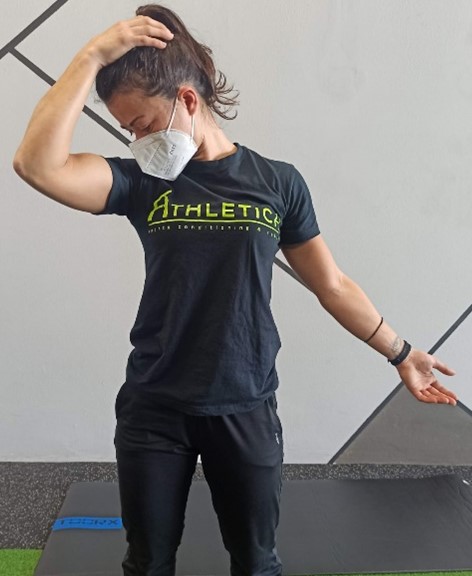
– Cross shoulder stretch: hold for one minute, breathing with the diaphragm
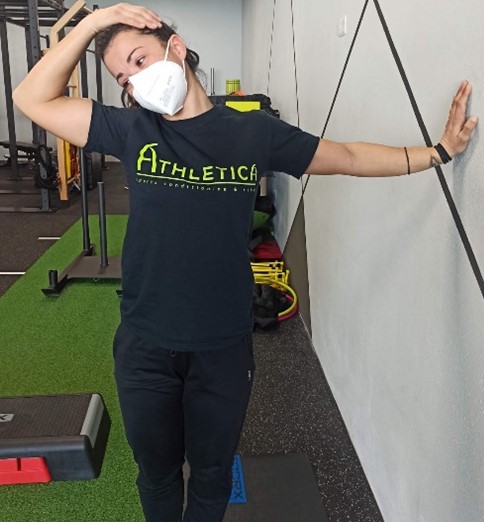
Examples of stretching for the hips and pelvis
– Ileo-Psoas: hold for one minute, breathing deeply

– Glute stretching: hold for one minute, breathing deeply

– Piriformis stretching: hold for 40’’, breathing deeply
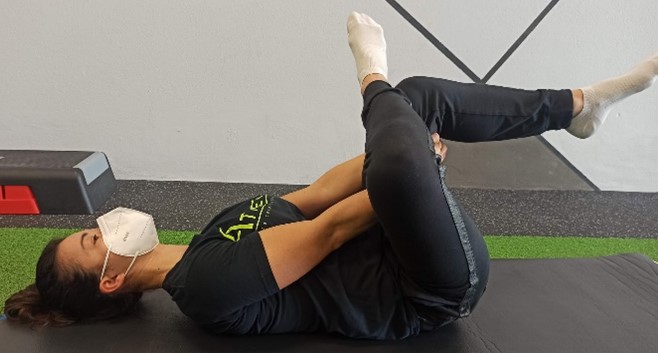
Examples of stretching for the lower limbs
– Hamstring stretch: hold for 40’’ breathing deeply
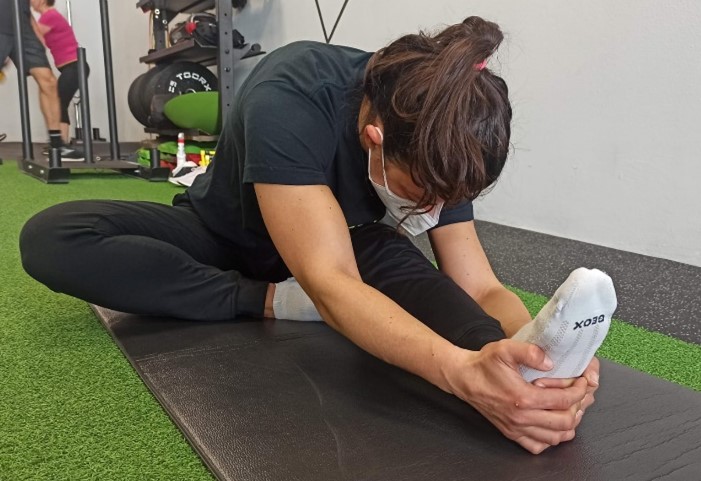
– Quadriceps: hold for one minute, breathing deeply
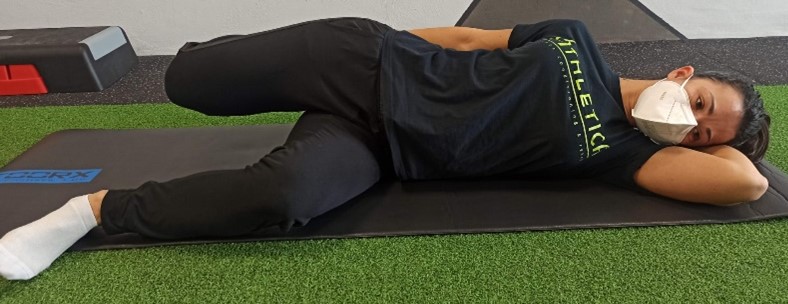
– Calf: hold for one minute, breathing deeply
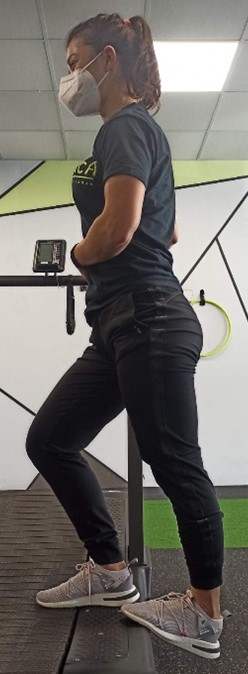
Tips on Stretching from the Physiotherapist
Here are some tips that from my experience can really make a difference in achieving the best outcome from your stretching exercises:
– Static stretching should only be done after physical activity; never before
– Dynamic stretching exercises are really useful as warm-up exercises before physical activity.
– During static stretching, try to tense the muscle to 5-6 on a scale of 1 to 10. A greater tension could lead to the muscle contracting to protect itself
– During stretching, focus on the muscle you are stretching, mentally trying to relax it more and more
– Breathe with your diaphragm: effective use of the diaphragm will mean that the muscles take less time to relax
– Hold a slight muscle tension for a prolonged period of time (from one minute to even 4’-5’ for postures). This will aid a stable modification of the connective tissue and thus a real increase in muscle elasticity.
– In stretching, constancy and quality of exercises give much more reward than quantity. Try to do stretching exercises constantly (even every day), following the correct movements and sequences, and keeping average tension, relaxing as much as possible.
Conclusions
The human body is genetically designed for movement. This means that to keep physically well, we need toned and flexible muscles. Therefore stretching plays an essential role, not only for athletes, but for everyone.
When playing sports, stiff muscles are at more risk of injury. What’s more, this stiffness has a negative effect on joint mobility and the neuromuscular coordination of the body, leading to reduced overall performance and increased risk of trauma to the joints.
Lastly, permanent muscle retraction can lead to changes in posture (for example hyperkyphosis, hyperlordosis, head anteposition, closed shoulders, pelvis rotation, patellofemoral pain syndrome etc.) possibly resulting in acute and chronic pain.
Therefore a personal stretching routine, or better still one devised together with the physiotherapist or kinesiologist, carried out every morning when you get up or after training, can lead to significant improvements in the quality of sports activities, but also for the day to day life of all of us.
Source: “Stretching Scientifically: A Guide to Flexibility Training” by Thomas Kurz



